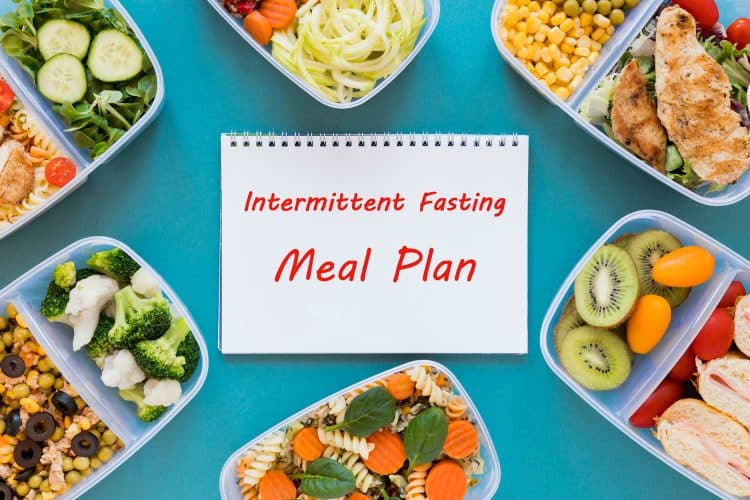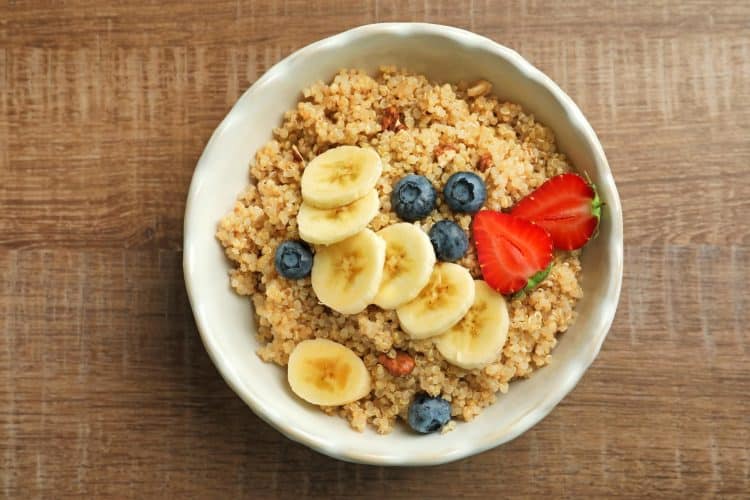Imagine a weight loss approach that not only helps you shed pounds but also boosts your brain function, reduces inflammation, and may even extend your lifespan. Sound too good to be true? Welcome to the world of intermittent fasting (IF).
In this comprehensive guide, we’ll dive deep into the science of intermittent fasting, explore various IF methods, provide practical meal planning tips, and address common concerns. Whether you’re a curious beginner or looking to optimize your current IF routine, this article has something for you. Let’s unlock the power of intermittent fasting together!
Understanding the Science Behind Intermittent Fasting

Intermittent fasting isn’t just another diet trend—it’s a scientifically backed approach to eating. More than 40 studies have proven that intermittent fasting can offer a wide range of health benefits, including:
- Reduced inflammation
- Improved brain function
- Enhanced heart health
- Potential increase in lifespan
But how does it work? During fasting periods, your body undergoes several metabolic changes:
- Insulin levels drop, facilitating fat burning
- Human Growth Hormone (HGH) levels increase, promoting muscle gain and fat loss
- Cellular repair processes are activated, including autophagy
- Gene expression changes, promoting longevity and disease protection
Popular Intermittent Fasting Methods
There are several ways to practice intermittent fasting. Here are some of the most popular methods:
1. The 16/8 Method
This is the most common approach, involving a 16-hour fast followed by an 8-hour eating window. For example, you might eat between 12 PM and 8 PM each day.
Level Up Your Fitness: Join our 💪 strong community in Fitness Volt Newsletter. Get daily inspiration, expert-backed workouts, nutrition tips, the latest in strength sports, and the support you need to reach your goals. Subscribe for free!
2. The 5:2 Diet
This method involves eating normally for five days of the week and restricting calorie intake to 500-600 calories on two non-consecutive days.
3. Eat-Stop-Eat
This involves a 24-hour fast once or twice a week. For example, not eating from dinner one day until dinner the next day.
4. The Warrior Diet
This method involves eating small amounts of raw fruits and vegetables during the day and one large meal at night.
Crafting Your Intermittent Fasting Meal Plan
While IF allows flexibility in food choices, optimizing your meal plan can enhance its effectiveness. Here are evidence-based guidelines from nutrition experts:
1. Prioritize Protein and Healthy Fats
Dr. Monique Tello, a Harvard Medical School physician, recommends consuming adequate protein and healthy fats to promote satiety and maintain muscle mass. Aim for 1.2-2.0 grams of protein per kilogram of body weight daily, sourced from lean meats, fish, eggs, and plant-based options like legumes and tofu.
2. Incorporate Complex Carbohydrates
Registered Dietitian Kristin Kirkpatrick suggests focusing on complex carbohydrates like whole grains, sweet potatoes, and quinoa. These foods provide sustained energy and essential nutrients, supporting your body during fasting periods.
3. Load Up on Non-Starchy Vegetables
Non-starchy vegetables like broccoli, kale, tomatoes, and Brussels sprouts are low in calories but high in nutrients like vitamins A and C, fiber, and potassium. Their high water content also helps fill you up, making them a great addition to your meals.
4. Stay Hydrated
Proper hydration is crucial during both fasting and eating periods. Dr. Rhonda Patrick, a biomedical scientist, recommends drinking water, herbal teas, and black coffee (in moderation) to support metabolic processes and reduce hunger sensations.
Expert Tip: Meal Timing and Composition
Dr. Satchin Panda, a leading researcher on circadian rhythms and time-restricted eating, suggests aligning your eating window with your body’s natural circadian rhythm. Consuming larger meals earlier in your eating window and lighter meals closer to your fasting period can optimize metabolic health and weight loss outcomes.
Sample Meal Plan for 16/8 Intermittent Fasting
Here’s an example of what a day of eating might look like on the 16/8 intermittent fasting method:
12:00 PM – Break Fast
- Large spinach salad with grilled chicken, avocado, and olive oil dressing
- 1 cup of mixed berries
- Herbal tea or water
3:00 PM – Snack
- Greek yogurt with a handful of almonds and chia seeds
- 1 medium apple
7:00 PM – Dinner (Last Meal)
- Grilled salmon with roasted vegetables (broccoli, carrots, Brussels sprouts)
- 1/2 cup of quinoa
- Small mixed green salad with balsamic vinaigrette
Remember to stay hydrated throughout the day with water, herbal tea, or black coffee. Adjust portion sizes and food choices based on your individual calorie needs and dietary preferences.
Potential Side Effects and How to Mitigate Them
While intermittent fasting can offer numerous benefits, it’s important to be aware of potential side effects, especially when starting out:
1. Hunger and Irritability
Mitigation: Start with shorter fasting periods and gradually increase. Stay hydrated and ensure your meals are nutrient-dense.
2. Headaches
Mitigation: Stay well-hydrated and ensure you’re getting enough electrolytes. Consider adding a pinch of salt to your water.
3. Fatigue
Mitigation: Ensure you’re eating enough during your eating window. Consider timing your fasts around your sleep schedule.
4. Digestive Issues
Mitigation: Ease into IF gradually. Focus on fiber-rich foods and stay hydrated to support digestion.
5. Difficulty Sleeping
Mitigation: Avoid eating too close to bedtime. Consider adjusting your eating window to end earlier in the day.
If these side effects persist or worsen, consult with a healthcare professional.
Which Meal is Best to Skip During Intermittent Fasting?
When it comes to intermittent fasting, there’s ongoing debate about which meal is best to skip. Some suggest skipping dinner to avoid late-night eating that can disrupt sleep. Others advocate for skipping breakfast to give your digestive system a break first thing in the morning.
Here, we make the case for skipping breakfast. Here’s why it might be the best meal to miss when you’re intermittent fasting:
1. Extended Fat Burning
Dr. Mark Mattson, a neuroscientist at Johns Hopkins University, explains that skipping breakfast extends the overnight fasting period, potentially enhancing fat oxidation and ketone production.
2. It’ll Help You Sleep In
Who doesn’t appreciate the chance to sleep in a little longer? By skipping breakfast, you can enjoy some extra rest in the morning instead of waking up early to eat.
3. You Can Feast at Lunch Instead
Concerned about being too hungry by lunchtime? Don’t be. Intermittent fasting helps your body adjust to using fat stores for energy, so even if you skip breakfast, you won’t be left feeling drained. Plus, you’ll have a hearty lunch to look forward to.
Level Up Your Fitness: Join our 💪 strong community in Fitness Volt Newsletter. Get daily inspiration, expert-backed workouts, nutrition tips, the latest in strength sports, and the support you need to reach your goals. Subscribe for free!
Expert Insight: Personalized Approach
Dr. Krista Varady, Professor of Nutrition at the University of Illinois Chicago, emphasizes that the best meal to skip is highly individual. Some people may find skipping dinner more sustainable and aligned with their social schedules. The key is consistency and choosing a schedule that you can maintain long-term.
5 Best Types of Food to Eat While Intermittent Fasting
To maximize the benefits of intermittent fasting, focus on nutrient-dense, whole foods during your eating window:
1. Complex Carbs
Whole grains like oatmeal, quinoa, and brown rice are excellent choices for complex carbs. “Complex carbs take longer to digest than simple carbs, so they won’t cause spikes in blood sugar levels,” says nutritionist Ilana Muhlstein, author of *The Everything Guide to Intermittent Fasting*. “They’ll provide lasting energy throughout the day.”
2. Healthy Fats
“Healthy fats help with satiety and can stabilize blood sugar levels,” says Muhlstein. “Avocado, olive oil, nuts, and seeds are all great choices.” Just be mindful—even though they’re healthy, fats are calorie-dense, so portion control is essential.
3. Non-Starchy Vegetables
Non-starchy vegetables like broccoli, kale, tomatoes, and Brussels sprouts are low in calories but high in essential nutrients. Their high water content also helps fill you up, making them a great addition to your meals.
4. Lean Protein
When it comes to protein, opt for lean sources like chicken, fish, tofu, and legumes. “Protein is essential for keeping you full and satisfied throughout the day,” says dietitian Tracy Lockwood Beckerman, RD. “Since you’re likely eating less overall while intermittent fasting, it’s important that the foods you do eat are nutrient-rich and satisfying.”
5. Herbal Tea
If hunger strikes during your fasting window, reach for a cup of herbal tea instead of food. “Herbal tea can help curb hunger by warming and comforting the stomach,” says Beckerman. Just make sure your tea is free of added sugars or ingredients that could break your fast—plain herbal tea is your best bet.
Nutrition Expert Advice: Balanced Approach
Dr. Valter Longo, Director of the Longevity Institute at USC, advocates for a balanced, plant-rich diet during eating windows. He suggests modeling your diet after Blue Zone populations, known for their longevity, by emphasizing plant-based proteins, whole grains, and abundant vegetables.
What *Not* to Eat While Intermittent Fasting
To ensure the effectiveness and safety of your intermittent fasting regimen, be aware of these potential pitfalls:
1. Sugary Drinks
Sugary drinks are a big no-no when you’re intermittent fasting. This means no soda, no fruit juice, and no sports drinks. The reason? Sugary drinks give you a quick burst of energy followed by a crash, which can make it harder to stay focused and could lead to cravings later on. Stick to water, unsweetened tea, and black coffee during your fasting hours.
2. Processed Snacks
When hunger strikes between meals, it’s tempting to reach for something quick like chips or cookies. However, processed snacks are high in unhealthy fats and simple carbohydrates, which can derail your fasting efforts. Choose healthier snacks like nuts, seeds, fruits, and vegetables—your body will thank you.
3. Too Much Protein
While protein is important for maintaining muscle and satiety, too much can lead to weight gain and other health problems. Aim for protein to make up about 20-25% of your daily calories—any more, and you might experience unwanted side effects.
Related: Find your daily protein intake
Expert Recommendation: Gradual Adaptation
Dr. Satchidananda Panda suggests a gradual approach to intermittent fasting. Start with a 12-hour fasting window and progressively extend it to 16 hours over several weeks. This allows your body to adapt and increases the likelihood of long-term adherence.
The Pros and Cons of Fasting for Weight Loss
There’s no denying that fasting can be effective for weight loss. However, like any dietary approach, it comes with both advantages and potential drawbacks. Consider these factors when incorporating intermittent fasting into your weight loss plan:
Pros:
- Potential for rapid weight loss: Many people experience quick initial weight loss when starting an IF regimen.
- Improved metabolic health: IF may enhance insulin sensitivity and promote better blood sugar control.
- Cognitive benefits: Some studies suggest IF may improve brain function and protect against neurodegenerative diseases.
- Flexibility: Various IF schedules allow you to choose an approach that fits your lifestyle.
Cons:
- Initial hunger and irritability: You might feel cranky and shaky during the adjustment period.
- Risk of overeating: Some people may overcompensate during eating windows, potentially negating the benefits of fasting.
- Potential for nutrient deficiencies: If not properly planned, IF could lead to inadequate nutrient intake.
- Not suitable for everyone: People with certain health conditions, pregnant women, and those with a history of eating disorders should avoid IF.
Pro Tip: Sustainable Fasting Practices
To maintain long-term success with intermittent fasting, focus on developing sustainable eating habits and incorporating regular physical activity. Start with a less restrictive fasting schedule and gradually increase fasting periods as your body adapts. Monitor your energy levels, mood, and overall well-being, and be prepared to adjust your approach if needed. Remember, the best diet is one you can stick to in the long run.
Conclusion: Embracing Intermittent Fasting for Optimal Health
Intermittent fasting offers a flexible and effective approach to weight management and overall health improvement. By understanding the underlying mechanisms and implementing evidence-based strategies, you can harness the full potential of IF to support your health goals.
Remember these key takeaways as you embark on your intermittent fasting journey:
- Choose an IF schedule that aligns with your lifestyle and circadian rhythms
- Focus on nutrient-dense, whole foods during your eating windows
- Stay adequately hydrated during both fasting and eating periods
- Listen to your body and adjust your approach as needed
- Consult with healthcare professionals, especially if you have pre-existing health conditions
With careful planning and commitment, intermittent fasting can become a sustainable and effective tool in your health and wellness arsenal. Remember, the journey to better health is personal and unique. What works best for you may differ from others, so don’t be afraid to experiment and find your own path to success with intermittent fasting.
Frequently Asked Questions About Intermittent Fasting
1. Can I drink water during fasting periods?
Yes, staying hydrated is crucial during fasting periods. Water, black coffee, and unsweetened tea are generally allowed and won’t break your fast. Dr. Jason Fung, a leading expert on intermittent fasting, emphasizes the importance of hydration during fasting periods to support metabolic processes and reduce hunger sensations.
2. Will intermittent fasting slow down my metabolism?
Contrary to popular belief, short-term fasting (like in IF) doesn’t slow down metabolism. Dr. Krista Varady’s research suggests that it may even boost metabolic rate in the short term. However, it’s important to maintain a balanced diet during eating periods to support long-term metabolic health.
3. Can I exercise while fasting?
Yes, many people exercise while fasting. However, it’s important to listen to your body and adjust your workout intensity if needed. Dr. Rhonda Patrick recommends timing your workouts towards the end of your fasting period to maximize fat burning, but emphasizes the importance of proper post-workout nutrition during your eating window.
4. Is intermittent fasting safe for everyone?
While IF is safe for many people, it’s not suitable for everyone. Pregnant women, children, people with a history of eating disorders, and those with certain medical conditions should avoid IF or consult with a healthcare provider before starting. Dr. Valter Longo stresses the importance of personalized approaches to fasting, taking into account individual health status and nutritional needs.
5. How long does it take to see results from intermittent fasting?
Results can vary, but many people report noticing changes within 2-10 weeks of starting IF. Dr. Satchin Panda’s research suggests that it takes about 2-3 weeks for the body to fully adapt to a new eating schedule. Consistency is key for long-term success, and it’s important to focus on overall health improvements rather than just weight loss.
Combining Intermittent Fasting with Exercise
Pairing intermittent fasting with a regular exercise routine can potentially enhance your results. Here are some expert-backed tips for effectively combining IF and exercise:
- Time your workouts wisely: Dr. Rhonda Patrick suggests exercising towards the end of your fasting period to maximize fat burning. However, if you feel low on energy, it’s okay to schedule your workouts during your eating window.
- Stay hydrated: Proper hydration is crucial, especially if you’re exercising during fasting periods. Dr. Jason Fung recommends drinking plenty of water before, during, and after your workouts.
- Listen to your body: If you feel dizzy, lightheaded, or excessively fatigued during a workout while fasting, it’s okay to break your fast early or adjust your exercise intensity. Your safety and well-being should always come first.
- Focus on nutrition: When you do eat, make sure you’re consuming enough protein and nutrients to support muscle recovery and growth, especially if you’re engaging in strength training. Dr. Stuart Phillips recommends consuming 20-30 grams of high-quality protein post-workout.
- Be flexible: You may need to adjust your fasting schedule on heavy training days to ensure proper fueling and recovery. Dr. Krista Varady suggests being flexible with your fasting schedule to accommodate your exercise routine and energy needs.
Pro Tip: Optimizing Exercise During Intermittent Fasting
When combining IF with exercise, pay close attention to your body’s signals. Start with lower-intensity workouts during fasting periods and gradually increase intensity as your body adapts. Consider timing your more intense workouts close to your eating window to ensure proper fueling and recovery. Remember, the goal is to find a sustainable balance that supports both your fasting regimen and your fitness goals.
Final Thoughts: Making Intermittent Fasting Work for You
Intermittent fasting is not a one-size-fits-all solution, but rather a flexible approach that can be tailored to your individual needs and lifestyle. As you embark on your IF journey, keep these final thoughts in mind:
- Start gradually: If you’re new to IF, start with a shorter fasting window and gradually increase it over time. This allows your body to adapt and increases the likelihood of long-term success.
- Prioritize nutrient-dense foods: During your eating windows, focus on consuming a variety of whole, nutrient-dense foods to ensure you’re meeting your nutritional needs.
- Stay consistent: Consistency is key with IF. Try to maintain your chosen fasting schedule most days of the week, but also allow for flexibility when needed.
- Monitor your progress: Keep track of how you feel, your energy levels, and any changes in your health or weight. This can help you adjust your approach as needed.
- Seek support: Consider joining an IF community or working with a healthcare professional who is knowledgeable about intermittent fasting. Having support can increase your chances of success and help you navigate any challenges.
Remember, intermittent fasting is a tool to support your health and well-being. It’s not about perfection, but rather finding a sustainable approach that works for you. With patience, persistence, and a willingness to listen to your body, you can harness the power of intermittent fasting to achieve your health and wellness goals.
Learn more about fasting
- Anabolic Fasting: Learn About Building Muscle and Losing Fat Simultaneously
- I’m a Fasting Expert: This is the One Mistake That Destroys Fat Loss During IF
- Inflammation Calculator & Personalized Action Plan
- Dry Fasting Calculator: Estimate Your Weight Loss & Safety Risks
- Intermittent Fasting Weight Loss Calculator: Discover How Much You Can Lose
References
- de Cabo, R., & Mattson, M. P. (2019). Effects of Intermittent Fasting on Health, Aging, and Disease. New England Journal of Medicine, 381(26), 2541–2551.
- Patterson, R. E., et al. (2015). Intermittent Fasting and Human Metabolic Health. Journal of the Academy of Nutrition and Dietetics, 115(8), 1203–1212.
- Varady, K. A., et al. (2013). Alternate day fasting for weight loss in normal weight and overweight subjects: a randomized controlled trial. Nutrition Journal, 12, 146.
- Longo, V. D., & Panda, S. (2016). Fasting, Circadian Rhythms, and Time-Restricted Feeding in Healthy Lifespan. Cell Metabolism, 23(6), 1048–1059.
- Mattson, M. P., Longo, V. D., & Harvie, M. (2017). Impact of intermittent fasting on health and disease processes. Ageing Research Reviews, 39, 46–58.














